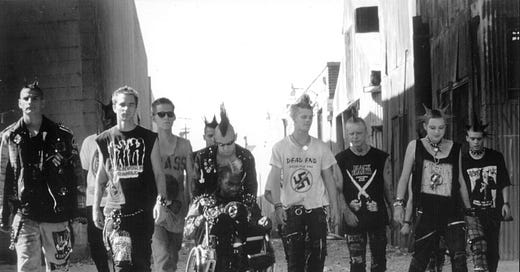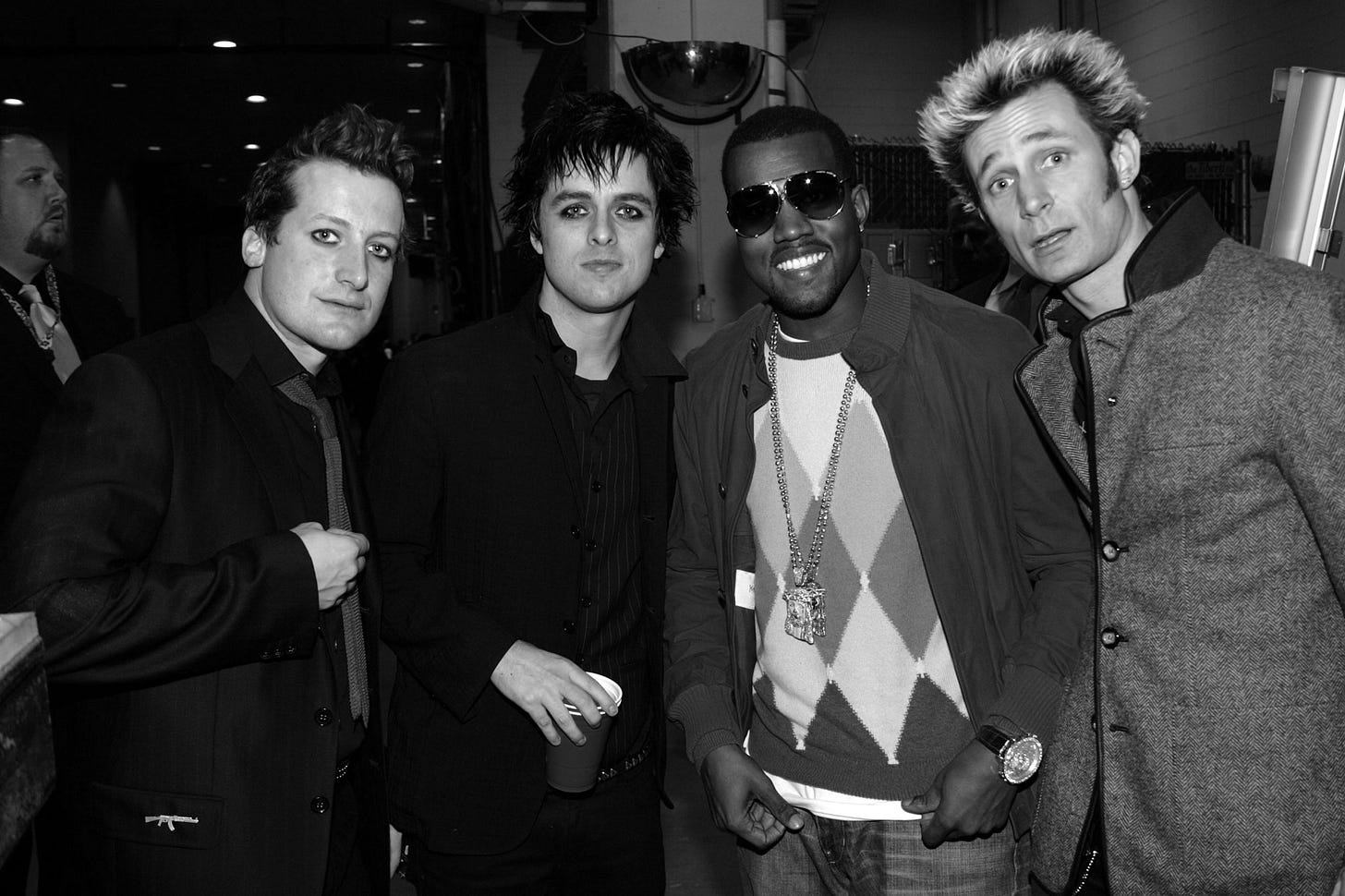Our new workshop, Autonomous Strategy Lab (a follow up to Autonomous Strategy, but also a good place to start if you haven’t done a workshop with us yet) is coming up in June. Read more about the workshop here, and email us at info@nemesis.global if you want to be on the early bird list. Enrollment opens soon.
Youth is in decline – this time literally, rather than figuratively.
With other crises and narratives du jour dominating headlines, plummeting worldwide birth rates aren’t really getting the attention they deserve, considering their magnitude and wider societal impact.
South Korea, for example, has a fertility rate of 0.78 births per woman, the lowest in the world. If this trend continues (and nothing so far suggests that it wouldn’t), in 40 years or so South Korea’s population will fall by 50% (and another 50% in 80 years, and another 50% in 120 years…). It’s an extreme example, but the same trend persists across the urbanized world1. In the US, Japan, China, Europe, Russia, the Middle East, Latin America, and South East Asia, fertility rates everywhere are below replacement rate. Some large cities in China have fertility rates as low as 0.4 (and there’s speculation the real numbers are significantly lower): hardly any babies are being born.
Interestingly enough, once a society’s fertility rate has started to decline, none have been able to meaningfully reverse the trend.
So far the conversation around birth rates has predominantly been framed as a binary left vs. right choice: pitting climate concerns and a positive vision of degrowth against ethnonationalist natalism. (Elon Musk isn’t helping here.) This simplistic framing obscures a more universal and pressing question, which is how complex societies can continue to function, or even fundamentally exist, with fewer and fewer people maintaining and managing them. Are we accidentally on track towards…extinction?
Luckily, that’s outside of our scope. What we’re concerned with at Nemesis HQ is the waning influence of youth culture, or the influence of youth on culture. When less and less youth is being produced will its cultural value reach a tipping point, and if so, in which direction? Will it gain an extreme premium due to its scarcity (the K-pop industry perhaps as a harbinger of this) or will its marginality make it culturally irrelevant?
Thankfully we’re not quite there yet. However, youth – the state of being young – means something different today than it did before. What used to represent infinite potential, opportunity, freedom, wildness and the ability to afford to waste time and do dumb things has been re-coded by the reality the young are actually facing: diminished opportunities, deep fundamental uncertainty, loneliness, and brain rot.
Of course it’s not entirely doom and gloom and being young is still rewarded by society – just much less so as the marketability of youth has decreased.
“Youth culture” itself is a historical phenomenon. It gained prominence as a concept in the 1950s and 60s as the cultural preferences, behaviors and consumption patterns of young people became increasingly distinct from older generations.
But all of the factors that drove its emergence have changed course:
During the first 50 years of youth culture dominance, youth had a monopoly on cool. There was no competition from older demographics: once people had kids or hit 30, they "aged out" of trendsetting. Today, aging doesn’t necessarily sideline you from cultural creation and influence is more equally distributed across generations. As an effect, what we’re seeing is the traditional cycle of youth shaping culture weakening as older generations extend their influence and aesthetic preferences downward.
This is further accelerated by the fragmentation of attention. Any celebrity or artist who became famous during the pre-social-media / broadcast era commanded a meaningful percentage of the total attention spent on pop culture. The name recognition built then has given them a permanent advantage over their peers trying to break out amongst the fragmentation of audiences, channels, trends and attention today. Kanye is 47. Green Day headlined Coachella last Saturday.
Even if older people would find the celebrities, trends and consumption patterns of younger generations attractive, social media algorithms effectively silo users into demographically defined bubbles (as a side note, TikTok, despite its youth-focused image, has seen its user base age up significantly, with nearly half of all adults now using the platform). Youth culture simply isn’t visible to outsiders, or if it is, it happens mostly through engagement- / rage-baiting content.
Today most older people would love to have the physical attributes of youth – but they wouldn’t want to be an actual young person living in 2025. Or, to quote ourselves from D is for Don’t Die: “Older people want the health that comes with youth, but not the skibidi.”
We’ve argued that the current center of gravity of generational cultural influence – and power in the companies that dictate its distribution – is somewhere amongst millennials.
Some of it is obvious: Kanye, Green Day, reboots of reboots – the pop culture of their youth that refuses to die. Or, as older millennials have started hitting middle age they become more interested in their health which has driven a major wider cultural re-orientation towards exercise, skincare, preventative medicine, diagnostics etc. visible across any relevant commercial metrics (again, see D is for Don’t Die).
Some of it is less obvious. Many anonymous online spaces dedicated to “youthful” activities (gaming, degenerate trading, fandoms etc.) are in fact filled with 40 year olds. Not because they’re groomers, but because they never felt like they aged out of them. 40 year old boomers are colonizing traditionally young cultural spaces with their own youth culture vintage. There’s no broccoli hair hiding behind that Milady; the median age on Crypto Twitter is 10+ years older than you think.
Other attributes of youth are also decoupling from actual age.
An increasing number of older people entertain Peter Pan identities and adolescent consumption patterns deep into their middle age, while maintaining the economic privileges they’ve accumulated. Late-adolescent seems to already be the default end-state generational identity of many millennials. A more aspirational variation of this could be ageless – true wealth-enabled generational ambiguity. Think 40-year-olds that look like 20-year-olds, and, logically, 20-year-olds that want to look like 40-year-olds that look like 20-year-olds. Indeed, if youth is no longer the dominant force in culture, but companies are still conditioned to market to "youthful" consumption patterns, we could see brands and industries targeting older consumers as if they were still young.
So in sum:
The marketability of youth (culture) has declined
The young as a consumer demographic is shrinking both in size and spending power
Youth culture has lost its monopoly on cool and is being challenged by older, larger and wealthier demographics
With most marketers obsessed with trying to decode the lives and desires of Gen Z and Alpha as a key to understanding what will drive culture and consumption, for better or for worse, we suspect more signal is to be found higher up in the population pyramid. The Big Question is how society itself evolves in an age where youth no longer automatically equals cultural currency. We’ll keep thinking and report back.
Some immediate implications that come to mind:
Keep reading with a 7-day free trial
Subscribe to Nemesis Memos to keep reading this post and get 7 days of free access to the full post archives.









